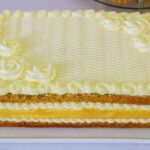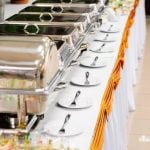Small cakes have taken the baking world by storm, capturing the hearts and appetites of dessert lovers everywhere. From dainty cupcakes to petite petit fours, small cakes are not only delightful to eat but also offer a canvas for creative and exquisite decoration. Learning how to decorate small cakes can elevate your baking game and make your treats irresistible to both the eyes and the taste buds.
Proper decoration is vital when it comes to small cakes, as their diminutive size means that every detail must be meticulously executed. Whether you’re a seasoned baker looking to perfect your skills or a novice eager to delve into the art of cake decorating, understanding the techniques and tools for adorning small confections is essential.
In this article, we will explore everything you need to know about decorating small cakes, from choosing the right frosting to mastering basic and advanced techniques. We’ll provide insight into troubleshooting common decorating challenges and inspire you with creative ideas for stunning cake decorations with a dash of finesse. So grab your piping bags and get ready to learn how to transform tiny cakes into expertly adorned masterpieces.
Essential Tools
Decorating small cakes can be a delightful and rewarding experience, and having the right tools is essential for creating beautifully decorated treats. Whether you’re a beginner or a seasoned baker, having the right equipment can make all the difference in achieving professional-looking results.
Piping Bags and Tips
Piping bags are a crucial tool for decorating small cakes, allowing you to create intricate designs and precise details. When it comes to tips, having a variety of sizes and shapes can provide versatility in your decorating capabilities. From round tips for simple piping to star tips for creating rosettes and swirls, having an assortment of piping tips on hand will give you greater creative freedom.
Spatulas and Offset Spatulas
Spatulas are essential for spreading frosting on small cakes smoothly and evenly. A small offset spatula is particularly useful for reaching tight corners and creating clean edges. Investing in high-quality spatulas will make the process of frosting your cakes much easier and more enjoyable.
Turntable
A turntable not only makes decorating small cakes more convenient but also allows for smoother, more consistent frosting application. By placing your cake on a turntable, you can easily rotate it as you work, resulting in more uniform frosting coverage around the entire cake.
In addition to these essentials, other useful tools for decorating small cakes include a bench scraper for smoothing frosting, food-safe paintbrushes for delicate detail work, and edible embellishments such as sprinkles, edible glitter, or decorative pearls. By ensuring that you have the necessary tools at your disposal, you’ll be well-equipped to create stunning decorations on your small cakes.
Choosing the Right Frosting
Achieving the perfect consistency for your frosting is key to successful cake decoration. The ideal consistency will allow you to smoothly spread or pipe the frosting onto your cakes without it being too stiff or too runny.
To achieve this, it’s important to carefully follow your chosen recipe and gradually add liquid (such as milk or cream) to reach the desired texture. It’s also important to ensure that your butter or cream cheese is at the right temperature before mixing it with other ingredients to avoid lumps and achieve a smooth consistency.
In addition to buttercream and cream cheese frostings, other options such as ganache, meringue-based frostings (like Swiss or Italian meringue), and fondant can also be used for small cake decorations. Each type of frosting has its own unique characteristics and applications, so choosing the right one will depend on factors such as flavor preferences, the design of the cake, and the desired aesthetic.
Ultimately, mastering the art of choosing and preparing the right frosting will significantly contribute to achieving beautifully decorated small cakes.
| Types of Frosting | Characteristics |
|---|---|
| Buttercream | Smooth consistency, versatile |
| Cream Cheese | Tangy flavor that complements various cake flavors |
| Ganache | Luxurious chocolatey texture |
Basic Techniques
Decorating small cakes can be a fun and creative process, but it’s essential to master the basic techniques before diving into more advanced methods. Piping is one of the fundamental skills in cake decorating, and having the right piping tips and bags is crucial. Different tips create different designs, so it’s important to experiment with various shapes and sizes to find what works best for your small cakes.
In addition to piping, mastering the art of spreading frosting evenly is essential for achieving a polished look. Using an offset spatula can help create smooth and even layers of frosting on small cakes. Creating textures is another basic technique that can add depth and visual interest to your decorations. Techniques such as ruffling, stippling, or creating swirls with a spatula can elevate the overall appearance of your small cake.
Practicing these fundamental techniques is key to building a strong foundation for cake decorating. By mastering piping, spreading, and creating textures, you’ll be well-equipped to tackle more advanced methods such as fondant work or sugar flowers in the future. With a solid understanding of these basics, you’ll be able to create beautifully decorated small cakes that are sure to impress.
| Basic Techniques | Fundamental Decorating Techniques |
|---|---|
| Piping | Mastering the art of using piping tips and bags for different designs. |
| Spreading | Using an offset spatula to spread frosting evenly on small cakes. |
| Creating Textures | Exploring techniques such as ruffling, stippling, and swirling with a spatula for added visual interest. |
Advanced Techniques
Fondant Work
Fondant is a versatile and popular choice for decorating small cakes. It allows for smooth, clean finishes and provides a perfect canvas for intricate designs. To work with fondant, it is important to ensure that the cake is covered with a thin layer of buttercream to help the fondant adhere.
Roll out the fondant to the desired thickness and gently drape it over the cake, smoothing out any air bubbles with a fondant smoother tool. From there, the possibilities are endless – create shapes, textures, and designs using fondant cutters or silicone molds.
Sugar Flowers
Sugar flowers are an exquisite way to elevate the decoration of small cakes. With careful crafting and attention to detail, sugar flowers can add a touch of elegance and sophistication to any cake. To create sugar flowers, begin by coloring gum paste with gel food coloring and then shaping it into petals using specialized flower cutters and veiners.
Assemble the petals into a flower shape, allowing them time to dry and harden before carefully arranging them on top of the cake. With practice and patience, sugar flowers can become a stunning focal point for small cake decorations.
Intricate Designs
Intricate designs encompass a wide range of decorative techniques that require precision and creativity. This could include hand-painting delicate details onto cakes using edible food colorings or creating complex patterns using royal icing.
Stenciling is another method for achieving intricate designs – simply place a stencil over the cake surface and gently spread icing or edible powder through it to transfer the pattern onto the cake. Incorporating these advanced techniques can result in stunning, one-of-a-kind small cakes that are sure to impress any audience.
By mastering these advanced decorating techniques, decorators can take their small cakes to new heights, creating visually stunning works of art that not only taste delicious but also showcase their skill and creativity in decorative design.
Creative Ideas
Decorating small cakes offers a world of creative possibilities, allowing bakers to showcase their skills and imagination in a compact and visually appealing way. Whether it’s for a special occasion or just for fun, the decoration of small cakes can elevate them from simple treats to stunning works of edible art.
When it comes to creative ideas for cake decoration, the options are endless. Here are some inspiring and unique cake decoration ideas to add a special touch to your small cakes:
- Themed Designs: Consider incorporating themed designs into your small cakes, such as favorite cartoon characters, sports logos, or even popular movies or TV shows. These designs can be achieved through careful piping work, fondant cutouts, or edible images.
- Seasonal Inspirations: Embrace the changing seasons by decorating your small cakes with seasonal inspirations. For example, in the fall you could opt for warm tones and intricate leaf designs using buttercream or fondant. In winter, think about snowflakes, holly berries, or festive ornaments as part of your cake decorations.
- Creative Shapes: Experiment with unique shapes for your small cakes beyond traditional rounds or squares. Consider using specialized cake molds to create heart-shaped cakes for Valentine’s Day, star-shaped cakes for birthdays, or even novelty shapes that tie into specific themes.
These creative ideas not only add visual interest to your small cakes but also create memorable experiences for those enjoying them. By tapping into these imaginative concepts, you can turn ordinary small cakes into extraordinary confections that leave a lasting impression.
It’s important to remember that the key to successful cake decoration lies in creativity and attention to detail. Don’t be afraid to think outside the box and experiment with different techniques and mediums; after all, there are no strict rules when it comes to decorating small cakes. Whether it’s through themed designs, seasonal inspirations, or innovative shapes, embracing creativity is essential in taking your small cake decorations to the next level.
Troubleshooting
Decorating small cakes can be a delightful and satisfying endeavor, but it is not without its challenges. Common issues such as smudged frosting, uneven designs, or air bubbles in the icing can quickly turn a beautiful cake into a frustrating mess. However, these challenges can be easily overcome with the right techniques and troubleshooting tips. Here are some common decorating challenges and how to address them:
- Smudged Frosting: One of the most common issues when decorating small cakes is smudged frosting. This can happen when the cake is not completely cooled before frosting or when using the wrong type of frosting for the desired technique.
To avoid this, make sure to completely cool your cake before applying any frosting. Additionally, consider using a crumb coat – a thin layer of frosting applied before the final layer – to prevent crumbs from mixing into the finished product. - Uneven Designs: Uneven designs can occur when spreading frosting or applying decorations. To overcome this challenge, use an offset spatula for smooth and even application of frosting. When creating designs or patterns, take your time and work carefully to ensure uniformity. Using stencils or templates can also help achieve consistent designs on small cakes.
- Air Bubbles in the Icing: Air bubbles in icing can create an unsightly texture on the surface of your cake. To prevent this issue, gently tap the filled piping bag on a flat surface to release any trapped air before decorating. When spreading icing, work slowly and deliberately to minimize air bubbles.
By addressing these common decorating challenges with the proper techniques and tools, you can elevate your small cakes to a professional level and create stunning confections that are as beautiful as they are delicious.
For more advanced troubleshooting tips and advice tailored to specific decorating challenges on small cakes, consider reaching out to experienced bakers or taking online classes that focus on cake decoration. Remember that practice makes perfect, so don’t be discouraged if you encounter difficulties – with time and dedication, you will master the art of decorating small cakes with finesse.
Final Touches
In conclusion, decorating small cakes is an art that requires attention to detail and creative flair. The final touches on a small cake can make all the difference in its overall appearance and appeal. Presentation is key, and the finishing touches can elevate a small cake from ordinary to extraordinary.
When considering the final touches for a small cake, it’s important to think about the overall theme or occasion. Whether it’s a birthday celebration, wedding, or just a special treat, adding personalized elements such as edible flowers, metallic accents, or intricate designs can take the cake to the next level. Additionally, utilizing fresh fruits, herbs, or other natural elements can add an extra pop of color and freshness to the finished product.
Ultimately, paying attention to every last detail when decorating small cakes is what sets apart a good baker from a great one. By focusing on presentation and incorporating those finishing touches with care and creativity, anyone can transform a plain small cake into a work of art that will impress and delight anyone who sees it. With practice and patience, mastering these final touches will undoubtedly enhance the beauty and appeal of any small cake creation.
Frequently Asked Questions
How Do I Make a Simple Cake Look Good?
Making a simple cake look good can be achieved by adding decorative elements such as edible flowers, fruit, or chocolate shavings on top. Another option is to dust the cake with powdered sugar or cocoa powder for a more elegant appearance.
Additionally, using a textured frosting technique or piping decorative designs with frosting can enhance the overall look of the cake.
How Do You Frost Mini Cakes?
Frosting mini cakes can be done by using a small offset spatula to spread a thin layer of frosting over the top and sides of each mini cake. For a smoother finish, an icing smoother tool can be used to evenly spread and smooth out the frosting.
It’s important to work quickly and with light pressure to avoid damaging the delicate cakes.
What Can I Put on a Cake Besides Frosting?
Besides traditional frosting, there are several alternatives for decorating a cake such as ganache, fruit compote, whipped cream, or cream cheese glaze. Another option is to use fresh fruit, nuts, or edible flowers as toppings for a more natural and visually appealing finish.
Drizzling caramel or chocolate sauce over the cake can also add an interesting twist without using traditional frosting. These options provide versatility in terms of flavor and presentation for any type of cake.

Welcome to my blog about home and family. This blog is a place where I will share my thoughts, ideas, and experiences related to these important topics. I am a stay-at-home mom with two young children. I hope you enjoy reading it! and may find some helpful tips and ideas that will make your home and family life even better!





